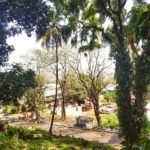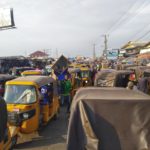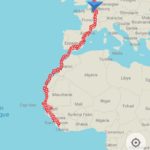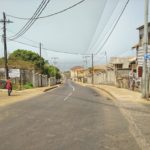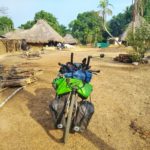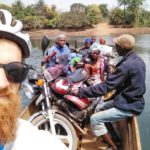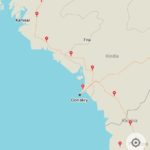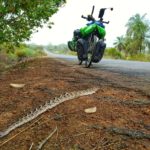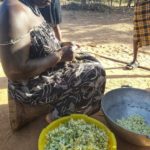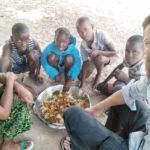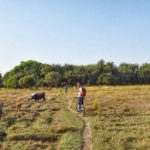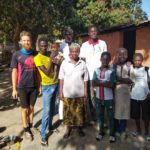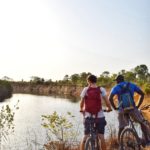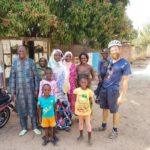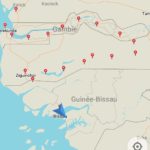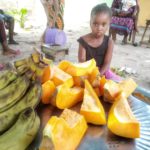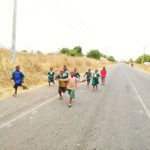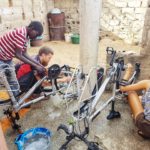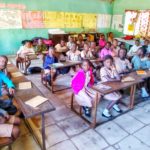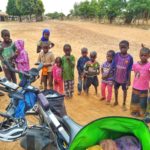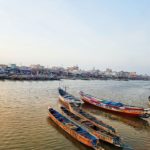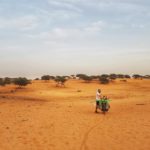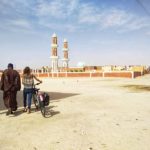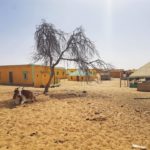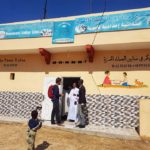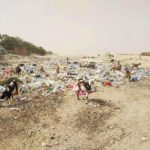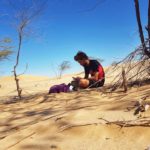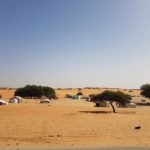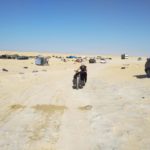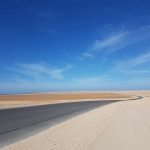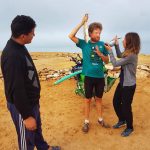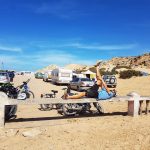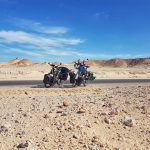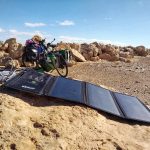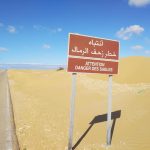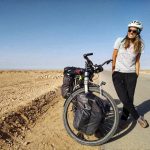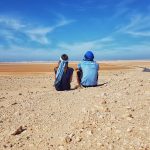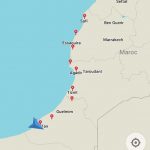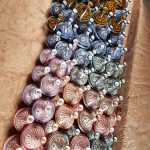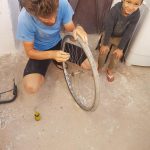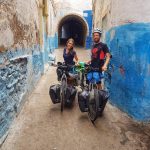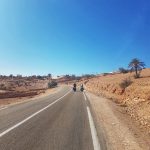From Zimmi (Sierra Leone) 10/03/2020 to Monrovia (Liberia) 05/04/2020
From Bamoi (Sierra Leone) 26/02/2020 to Zimmi (Sierra Leone) 09/03/2020
It’s been 6 months I’m in the adventure. It also means 6 months with lack of comfort. Since a few weeks three major factors are getting me tired: heat, food and pression. If I have to summarize: the heat makes it difficult to cycle and sleep (I slept well 2 times the past month) so I get tired and I can’t rely on food because, my God, it was terrible in Sierra Leone and not crazy in Guinea (and it’s basically always the same). Besides that, it’s NEVER quiet in Africa: rooster, baby, music, trafic, parties,… + “white white white” + “come and talk” + the whole village staring at me pitching my tent, brushing my teeth , writing my logbook, etc. There’s no such thing as “privacy quietness”, even not from 10pm to 8am and people cannot talk softly: they yell.
Of course, I like West Africa for all what I said previously and I’ve chosen for this adventure and I don’t want to go back home. But still… home sweet home.
Since the roads were new since one or two years, it was an absolute smooth bicycle lane all along the country (except for the horrible last 30km).
The trafic in Freetown was, I guess like most of the west African capitals, a nightmare (but still better than in Conakry).
I fell on the 15km-track leading to Tiwai Island.
The red dots are where I slept : asking to the village’s chief, as always, except for the first night (somebody came to me to host me), in Freetown (thanks Shantelle), on Tiwai Island (camping) and the last night (thanks Martin).
Even though I couldn’t see big differences with the past subsaharian countries, I could feel that the country was poorer: more people asking for money and food, less invitations for food, not a lot of food, not a lot of electricity,…
Even though it’s not scenic along the way, I’ve seen the most beautiful beaches I’ve ever seen and visited a wildlife sanctuary (Tiwai Island) with a lot of different types of monkeys and birds.
Random stories: Freetown is a real mountain-city. Not easy by bike, asking to the chief of the village for sleeping was most of the time no prob but two times it was lots of arguing, I was literaly thrown out a school because the parents thought I came for injections, I visited 10 schools in with a lot of lack of material and human ressources (can you spot Wikoo on the pic?), I had my second puncture of the trip.
In Sierra Leone I liked:
– Tiwai Island
– Beaches
– Brandnew roads
I disliked :
– FOOD !!! MY GOD !!! (except for coconut and pineapple)
From Dabiss (Guinea) 15/02/2020 to a village somewhere close to the Sierra Leonean border (Guinea) 25/02/2020
Entering Guinea was a real adventure : in a small village in Guinea-Bissau ?? a guy told me: “Follow this path. It leads to Guinea”. I felt like Frodo in the Lord Of The Rings. The path was in fact a very narrow path going through villages and the jungle during 15km. There wasn’t even a border control when I entered Guinea geographically. I crossed a river by canoe with 2 motorcycles, my bike and other people. After 30km in Guinea there was eventually a border control. The path became a “piste” which wasn’t easy because of all the shocks.
I eventually reached Dabiss, a big village, where I had to cross a river IN the water because the bridge was broken. Three days of real adventure.
As you could read in the previous post, entering Guinea was an adventure. The only roads were “pistes”.
But from Boké to Sierra Leone??, I cycled on the road which wasn’t in good shape (sometimes it changed to pistes).
The red dots on the map are where I slept : asking to the village’s chief, as always.
Once in Boké, I started the school visits which, unfortunatelly, weren’t very successful for educational games. There were also lots of strikes which made the visits complicated: only in the early morning. Can you spot Wikoo on the pic?
Entering Conakry was a real adventure too: trying to survive in the hellish trafic, not to breath exhaust gas and smoke of burning trash, not to slip on trash,… I didn’t like the capital but I was warmly welcomed by a Guinean couple who made me visit.
Guinea ?? was a tense country, especially right now because of the referendum and legislative elections the first of march. There was some protest overall the country so it was more save to quit the country before that date. People also called me a lot more along the road which was annoying.
In Guinea I liked:
– adventurous entering
– hospitality
– dancing in Conakry
I didn’t like:
– trafic
– Conakry
– being called hundreds of times a day, especially when it’s just to say “foté” (=white) and not even “hello”.
From Sao Domingos (Guinea-Bissau) 08/02/2020 to Gandembel (Guinea-Bissau) 15/02/2020
First thing I had to do when entering Guinée Bissau was washing my hands to prevent Ebola (but there wasn’t even soap !).
I was afraid entering the country ’cause I absolutely don’t speak portuguese but people were absolutely adorable like in Senegal ?? and The Gambia so the communication wasn’t difficult. The landscape became more “jungly” the more I cycled south. I visited Bissau which is a small (polluted by smog) but cute capital (thanks Cyril for hospitality) and continue my way south.
It’s also getting more and more hot which is getting difficult.
On the last pic you can notice “dames” which is also played in Senegal and The Gambia.
First thing I saw while entering Guinea-Bissau ?? was the terrible road ! Most horrible since the very beginning. Luckily after Mansoa it was getting slightly better.
After Quebo I started a more than 100km “piste” full of dust that led me to Guinea Conakry ??. I slept a few km from the theoretical border. Crossing into Guinea Conakry was a real adventure!! Explanation in next map. Stay tuned.
The red dots on the map are where I slept: like always… asking to the village’s chief where I’m always very welcomed! (Except in Bissau – thanks Cyril)
“Branco con pé lélé” (white as the skin of milk). That’s what the kids were singing all along the way when they saw me.
I had some good time in waterfalls where I was the only not naked person. The same day I started my way to Guinea Conakry ?? in the middle of the jungle.
On the second pic you can notice a classical handmade toy. ALL the kids have a similar one here (Senegal & The Gambia too).
I didn’t visit any school because the education system is in portuguese.
In Guinea-Bissau I liked:
– hospitality
– the fact they speak some french too
– jungle
I disliked :
– the roads!!!
– smog in Bissau
From Basse (The Gambia) 24/01/2020 to Ziguinchor (Sénégal) 08/02/2020
Casamance was a beautiful region, especially Basse Casamance : lots of water, birds, fish, green landscape,…
Like always, I was welcomed every time like a king by the “chef de quartier” with dinner, shower and room. Once, in a village with no electricity, I was waken up by a fight between big brother and younger brother. Younger brother had to go to the hospital because of a knife stab. After that many many people came to see what happened.
All this happened in my compound. Eventually I slept like a baby.
Close to Ziguinchor I assist at funerals at the chief’s compound. On a pic you can observe animist rituals.
People are always very kind and helpful. I feel guilty for being so suspicious sometimes: too much watching after my bicycle, my bags, thinking that people stole me something when I don’t find it back. Once I lost my earphones in the morning, everybody helped me to find it back but nope… Eventually I continued to cycle and a guy on motorcycle came to bring it: he found them back.
All the roads in Senegal were good. The only problem is that they are also used by cows, donkeys and goats. When I was lucky, I saw some monkeys.
The red dots on the map are where I slept: asking to the “chef de quartier”.
Once, the son of a chef told me this very true quote : “This is life. It’s not a question of being Christian or Muslim. It’s about welcoming people and at their turn, they will welcome people too.”
I spent the last days in Senegal in Basse Casamance region doing some sightseeing and different sports: mountainbike and kayak. I had the best oysters of my life : they grow on mangrove so you basically grab some roots, put them on the fire and eat them (with a fresh beer).
In Senegal I liked:
– hospitality
– colonial architecture in Dakar and St Louis
– roads
– beaches
– Casamance
– floating on Lac Rose (incredible sensation)
I disliked:
– bread
– hearing 300 times a day: “toubab”
– entering Dakar (30 most dangerous km since beginning)
From Saint-Louis (Senegal) 16/12/2019 to Basse (The Gambia) 24/01/2020
We were welcomed by monkeys the first kilometers we cycled into Sénégal and by kids who remember you that you’re white not less than 200 times a day: “toubab toubab toubab”. We had a good time meeting travellers and locals in beautiful St Louis where we also visited a primary school. We could quickly realize it was the watermelon season : there were mountains of the fruit along the road. We ate other good fruits like papaye, traditional dishes like tieboudien and beverages like “pain de singe” (fruit from baobab tree) and “bissap” (hibiscus flower). Afterwards we cycled along the coast and slept in villages (always asked the chief) where we pitched our tent in front of millions of kids staring without expression on their faces. Afterwards, we had a good time partying and visiting in Dakar with family. I also bought enough Artemisia for the rest of the trip in Africa to prevent from malaria. We eventually cycled to Mbour, 85km downwards passing through typical villages.
From 24/12 to 10/01 we had a break in Mbour, 85km south of Dakar. I joined a project with colleagues and pupils of my former school and Lucie stayed in a senegalese family. The 11th we washed our bikes and the 12th we cycled to The Gambia where I visited schools (can you spot Wikoo on the pic ?). Lucie decided to cycle back to Senegal while I continued to cycle east of The Gambia. I always asked the village’s chief for hospitality and he always gives me a room, dinner and shower.
A few nights ago I had the WORST night ever: I was waken up around midnight by kids who were playing a night game during 30min: yelling in the village (and thus in the chief’s compound and thus next to my door) while smashing two machetes together and scratching at my door. At 5am the muezzin woke me up (just next to the chief’s compound). At 6am the mice in the room woke me up and eventually at 8am small kids entered the room.
My body is now used to all types of water (sometimes it’s not super clean+different tastes) and food.
I had difficulties charging my electronic devices because there was no electricity in villages (while 4G everywhere) and not enough sun to charge with my solar panels. So I stopped at small “boutiques” in villages with electricity and asked to charge my devices while I had lunch. I was then always invited for tea while I was eating by people passing by.
In The Gambia I liked:
– Hospitality
– Roads
– Landscapes
– Swimming in river Gambia
– 4G everywhere
– Bread
I disliked:
– hearing too much “toubab” like it was my name
We were always cycling on main roads (no sand or stones). Entering The Gambia was easy: no visa needed, just a stamp in the passport.
I was facing headwind during all The Gambia which wasn’t pleasant.
We took twice a boat to cross rivers (because no bridge)
The red dots are where I slept : warmshowers or asking to the chief of the village.
From Guergerat (Morocco) 31/11/2019 to Saint-Louis (Senegal) 16/12/2019
On the map you can see our itinerary in Mauritania. The red dots are where we slept.
We crossed a no man’s land which is a 4km strip parting Morocco from Mauritania (and a car cemetery). No one has jurisdiction over this land and no rules apply so nobody is responsible if you have any trouble. Said so, it seems frightened but we had no problem crossing it (except that we had to push our bikes in the sand for 2km).
At the end of the moroccan Sahara, the landscape changed a bit from rocks to sand. The prettiest part of the Sahara was in Mauritania where we saw sandy dunes. Mauritanian coloured villages and cities are less developped than in Morocco so we had to calculate a bit more for water if we didn’t want to make people we met along the road do whithout water.
In Nouakchott we met very interesting Mauritanians working in education and expats working in the private sector (Alex ate the best calamar ever in a restaurant run by French expats).
We visited 2 schools in Nouadhibou and 3 in Nouakchott where teachers showed us interesting games that you can discover on our website. Can you spot Wikoo sat with the pupils in Nouakchott on the 10th pic?
The end of Mauritania was very surprising because we made it out of the Sahara in 2 days (!): first trees appeared, then the sand was covered with grass and then we saw swamps, people fishing, many different birds, warthogs, etc. The desert was finally over!!
We spent 15 days in Mauritania. Each bikeday finished with the meeting of Mauritanians who welcomed us warmly. We slept in our tent more often than in Morocco but people always allowed us to put up our tent on their property and sometimes offered us a meal. They were very respectful of our needs.
About 90% of Mauritania is in the Sahara. The population is mostly concentrated in the south. Arabic is the official language but other languages are widely spoken : French, Soninke, Pulaar and Wolof. The population is subdivided into three major ethnic groups :
– The White Moors are the Saharawi people. They speak an Arabic dialect called Hassaniya.
– The Black Moors (Haratins) are descendants of West Africans slaves. They were held as slaves by the White Moors and learnt their masters’ language so they are Arabic speakers.
– The Afro-Mauritanians of whom the majority are from the Senegal River. They speak Soninke, Wolof or Pulaar.
Mauritania made slavery illegal in 1981 but lots of people from Haratine and Afro-Mauritanian groups still live as domestic servants (slavery is a taboo in the society).
In Mauritania we liked :
– Pretty sandy desert
– Visiting primary schools and discovering learning activities
– Sun
– Coloured houses in the villages
– Discovering dailylife and mauritanian culture
We didn’t like :
– Food…but we liked tasting she-camel’s milk
– Waste along the roads…eaten by goats
– Expensive prices
– Nouakchott because there is nothing to do except for lazing on the beach.
From El Ouatia (Morocco) to Guerguerat (end of Morocco) 31/11/2019
Morocco finished with an eeeeeeeennnddllleeessss monotonooouuuussss desert (which continues in Mauritania): rocks, stones and sand (and if you’re lucky: camels).
You can see our itinerary on the map. The red dots are where we slept : couchsurfing or just knocking at people’s door. Our average distance is 64 km/day since the beginning (including breaks in cities). Record: 137km in one day (Lakhsas-Ras Oumlil). We did a total of 320km by truck in the desert.
Physicallly the Sahara was not that difficult but mentally discouraging (especially for Lucie). We started to listen to music and podcasts (Alex is becoming an expert in paleo-anthropology) which help to pass the time. The desert wasn’t what we expected : very secure (many security checkpoints on the road : the gendarmes always wanted to know where we intended to stop and sleep; they asked us two times to sleep with them), temperatures between 15 and 22, often big fog at night, always something in sight (antennas, trucks, cars, gendarmerie, small villages, electrical wires,…). We had great moments with the Sahraouis who have their specific way to prepare the tea : they create a big frothy head in each glass because the froth traps the sand and keeps it at the top. At each time they drink tea, they are used to drinking 3 glasses. We also shared delicious fresh fish with Sahraouis.
We spent a few days in Laâyoune and then in Dakhla. We also continued to visit primary schools in the desert. Can you spot Wikoo on the pic taken in Laâyoune?
We spent 41 days in Morocco. Here you can see pictures of our last moroccan moments. Each bikeday finished with the meeting of Moroccans who welcomed us very warmly. Moroccans are the most generous people we have ever met. We shared lots of amazing moments and interesting discussions with them. We discovered many cities and villages along the coast and our discoveries made us want to travel more in Morocco.
Morocco has 2 official languages : Arabic and Amazigh. Actually people speak an Arabic called “Darija” which is different from written arabic. “Amazigh” is the language of Berbers and has recently received an official recognition. French isn’t an official language but is present everywhere : shop front signs, administration, road signs, press,… At school lessons are usually given in French in the morning and in Arabic in the afternoon (which is very difficult for the pupils).
We are mad about Moroccan food : tajine, couscous with rye, dates, pastries, … Alex is now good at preparing Moroccan tea. In Morocco we particularly appreciated the importance of the group : food is served in one big dish placed in the middle of the table, the main room of the house is a large living to spend time together (with a mint tea),…
In Morocco we liked :
– Generosity and warmth of Moroccans
– Food
– Visiting primary schools and discovering learning activities
– Sun
– Biking along the Atlantic ocean
– Assilah, Larache, Rabat, Safi, Dakhla
– Discovering dailylife and moroccan customs
We didn’t like :
– Waste along the roads
– Monotonous landscape in Sahara
– Humid nights in Sahara
Well… Lucie didn’t like the Sahara except for people we met
From El Jadida (Morocco) to El Ouatia (Morocco)
The red dots on the map are where we slept between El Jadida & Tan-Tan (El Ouatia).
Our average distance is 65 km/day since the beginning (including breaks in cities)
In Morocco almost every evening starts with the same ritual: we ask to put up our tent, we put it up while discussing with our hosts and then they propose to share their dinner and tea with us. Eventually we sleep in their house. But every evening has its particularities:
– in El Jadida our host guided us through the city and challenged Alex to go swimming under the rain;
– in Safi (Safi is the pottery capital of Morocco) an old woman took care of us as if we were her kids;
– in a village close to Essaouira it was like the family was waiting for us (our host invited us in before we said a word);
– in Smimou a young man (Mohammed) welcomed us in his house. We spent a funny evening with his family and Alex repaired Mohammed’s bike the next morning;
– at a warmshowers host in Tamri (thanks Habib!) we met Houcine who hosted us the next day in Agadir. He also guided us through the city and drew our portrait to celebrate our 4000th km;
– in Lakhsas we slept inside a house which also hosts a donkey, sheeps and goats (…& a grandma who couldn’t stop talking!!);
– in Ras Oumlil (first night in the desert) our hosts lost the key of the garage in which our bicycles were so we didn’t have our stuff for the night.
The landscape has changed from Safi : it has became more and more arid, rocky and hilly and we’ve seen less and less fields, trees and houses.On one pic you can see Kristof and Alex somewhere between Smimou & Tamri. We spent a great bike day with Kristof who is a Belgian cyclist from Mechelen. After Agadir we clearely noticed that the desert wasn’t far away. Guelmim is the official entrance of Sahara: endless sandy landscapes, long straight roads, no more trees. We visited several schools in the desert but we have now a long weekend off because of the independance day (18th November).
From Tanger (Morocco) 20/10/2019 to El Jadida (Morocco)
From Tanger we have basically followed the coast. The roads are well made and people are surprisingly bicycle-friendly and always encourage us. We experience new types of traffic : donkeys, horses, delivery tricycles.
.
The red dots on the map (1st pic) are where we slept : warmshowers or just knocking at people’s door. The cities and villages were we slept are: Tanger, Assilah, Laouamra, Ben Mansour, Salé, Casablanca, Dar Bouazza, Lamharza Essahel.
.
Our average distance is 61 km/day since the beginning (including breaks in cities).
.
On our road between Tanger and Rabat, we biked across Assilah and Larache (2nd pic) which are beautiful cities. We spent 2 days in Rabat with a lovely family who took care of us as if we were family members. We visited Chellah (3rd pic), the “kasbah des Oudayas” (4th & 5th pics), the Hassan tower (6th pic), we walked along the marina (7th pic) & through the medina (8th pic).
.
There are no words to describe how much Moroccans are welcoming. It’s unbelievable! When the sun goes down, we knock at people’s door: “Hello, can we put up our tent in your garden?” and we don’t have to wait for the answer to be: “No, come on in and we’ll offer you food, drinks, a room, a shower.”
When we stop along the road, people give us fruit, tea, bread,…
.
In Casablanca we visited a primary school, Habous quarter (9th pic), the old medina & the majestic Hassan II Mosque (10th, 11th & 12th pics). The traffic is hellish in Casa which is very polluted.
.
So far we’ve visited 5 schools in Morocco but from November 1st to 12th we won’t visit any school because pupils are on holiday to celebrate the Prophet’s birth and the anniversary of the Green March (end of Spanish occupation in Western Sahara in 1975). Wikoo (our mascot) always goes to the schools with us : can you spot him on 13th pic?
.
Moroccans are very attached to eating : they always encourage you to eat more and more. Now we know that more meals are always waiting to be served and we aren’t finished until we see fruit or tea. We tasted several traditional dishes : seffa, harira (a soup often drunk to break the fast during Ramadan – Lucie is completely mad about it!), tagine (14th pic), couscous (eaten every Friday),… Moroccans say : “A Friday without couscous is like a week without Friday”. They eat a lot of bread, dried fruit (Alex looooves dates) and they drink tea all day long.
From Alicante (Spain) to Tanger (Morocco) 20/10/2019
After visiting Valencia, we met an English family who welcomed us in Oliva. When we woke up in the morning there was lots of food on the table with a lovely note. It was like if Santa Claus came to us. We continued to follow the coast under the sun as far as Almeria. Let’s precise following the coast doesn’t mean the road is flat : most of the time we climbed from the sea level to the top of the mountains before enjoying a downhill as far as…the sea level and climbing again. We didn’t like the atmosphere and the pollution when we biked across the greenhouses of Almeria (intensive agriculture). We planned to reach Malaga (from Almeria) in 2 days (+/-200km) but we had to change our plans because of a 60km/h headwind. We had to pedal even in the downhills if we wanted to move forward. Finally we reached Malaga in 3 days and we met up with Surya who we met for the 1st time 1300km before. We spent a nice evening with her in the beautiful city center of Malaga. There are two main roads between Malaga and Marbella : an autopista and an autovia. In Spain, the drivers have to pay for using the autopistas (highways). Some Spanish people say autovias are allowed to bikes while others say they are not. After being arrested by the police along the autovia, we thought we had the final answer… As there was no alternative way, we biked and walked on the right side of the guardrail. Hard day !
The next day we passed the police several times while we were biking on the same autovia (because we had no alternative) and they waved to us. Our conclusion : do your best (or…some sections are allowed, others are not). After a wildcamping night in Marbella, we biked to Algeciras (worst spot ever : so much waste…but it was already late and we were tired) and then Tarifa. We cleaned our bikes at a petrol station (because we usually clean our chains with petrol) and spent our last Spanish night in Tarifa (kitesurfing city). In the morning we discovered that a part of one of our panniers had been eaten by mice during the night. We repaired it in Morocco with a piece of inner tube that Alex sewed on each side. We took the ferry from Tarifa to Tanger on Sunday 20th October. Bye bye Spain…y gracias !
.
In total we slept 26 nights in Spain: 15 under a roof and 11 wildcamping nights.
.
In Spain we loved :
– Sun
– Bicycle friendly drivers (they’re patient & remain distant)
– City centers of Barcelona, Valencia & Malaga
– Shower on the beach before wildcamping
– Making fire on the beach
– Learning Spanish
– Bicycle paths in the towns
– Water everywhere (especially in the parks)
.
We didn’t love :
– Waste along the roads
– The road between Malaga & Marbella
– The greenhouses of Almeria
Description of our itinerary you can see on the 1st pic:
After Benferri we followed the Rio Segura , which had a good bicycle path, as far as Alcantarilla. Afterwards it was basically the national way N-340 to Malaga.
Then we followed the autovia (bicycles allowed or not. We still haven’t any idea –> look at description on previous post) as far as Algeciras, passing through Marbella.
The national road led us to Tarifa, southest point of continental Europe.
.
The red dots are where we slept : warmshowers, couchsurfing or wildcamping.
.
Our average distance is 75 km/day since the beginning.
From Charmes-sur-Rhône (France) to Alicante (Spain)
Here is the follow-up of our adventures. You can see our itinerary on the map. The red dots are where we slept : warmshowers, couchsurfers or wildcamping. Our average distance is 80km/day since the beginning.
Along the Rhône we met a couple from Paris who was travelling by bike during their holidays. We biked during 2 days with them and shared nice moments. We also spent very great evenings with people who welcomed us when we followed the ViaRhona. Thanks guys !
Then we reached the Mediterranean sea at Le Grau-du-roi. Our legs loooove Camargue which is sooo flat. Shitty weather on our way from Béziers to Perpignan : we woke up under the rain but we had to pack up and go. It was a hard day with a new rainy wildcamping night in sight but David & Corinne welcomed us unexpectedly thanks to David’s brother who is a warmshower host we met 1000km earlier. They gave us a lot of comfort ! Thanks ! The next day we discovered the Pyrénées (it was like a wall in front of us) and met a marathon man (11 times!!!) who loves cycling. He took care of us and biked with us as far as the spanish border (you can see his helmet on the 5th pic). A bientôt la France …et MERCI ! .
In France we loved :
– Tradition of cheese after dinner – Wine
– Bread
– Our hosts- Fruit along the road
– ViaRhôna
We didn’t love : the absence of bicycle paths in cities
In total we slept 19 nights in France : 11 at warmshowers & couchsurfers houses, 1 at the hotel for Alex’s birthday & 7 wild camping nights.
Our first night in Spain was in Girona at a couchsurfer host who comes from Pakistan. He cooked a traditional pakistani breakfast for us. Then we reached Barcelona and enjoyed 3 days off with Alex’s parents. We visited the Sagrada Familia, the casa Batllo, we walked through the beautiful little streets in the city center, drank sangria & mojito and ate the traditional paella . After Barcelona we rode our bikes again to Valencia (370 km further). We wildcamped during 4 consecutive nights. At the end of each day we joined the beach to have a shower before searching for our wild camping spot, putting up the tent and cooking. Not always easy to find a spot where we can make a fire (to cook) whithout being seen. At the end of the 4th wildcamping night we were woken up by the police exactly when our alarm clock was ringing : “Holà. Police. No camping here. 10 minutes you go”. Then we spent a night at Castello before enjoying a day off in Valencia where we tasted a drink made with a tuber (chufa) named “horchata”. We loved the City of Arts and Sciences which is beautiful!
From Brussels (Belgium) 03/09/2019 to Charmes-sur-Rhône (France)
First pics of our world bike tour.
We followed the Meuse till Charleville-Mezière.
We took the canal between Champagne and Bourgogne till the river Saône.
We followed the Saône till Lyon and now we’re following the Rhône.
.
The red dots on the map are where we slept: warmshowers, couchsurfing or wildcamping.
.
Our average distance is 73km/day. Maximum 120km.

